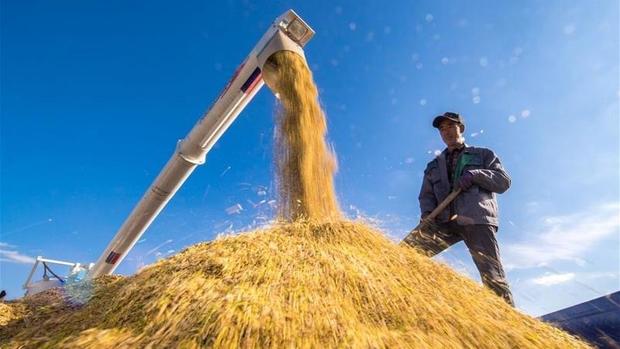 A farmer dries rice at a rice field in Yilaxi township of Yongji county, northeast China's Jilin province, Sept 17, 2018. (XU CHANG / XINHUA)
A farmer dries rice at a rice field in Yilaxi township of Yongji county, northeast China's Jilin province, Sept 17, 2018. (XU CHANG / XINHUA)
ROME - World food prices rose again in September, climbing to their highest levels since February as higher prices for wheat, corn, and vegetable oils offset lower prices in other areas, the United Nations Food and Agriculture Organization (FAO) reported Thursday.
The broad FAO World Food Price Index gained 2.1 percent, following gains of 2 percent, 1.2 percent, and 2.4 percent in August, July, and June, respectively. The combined gains since June were enough to nearly cancel out falling prices over the first five months of the year. FAO said the index is now at its highest level since February, and 5 percent above its level in September 2019.
Prices for grains and cereals -- the largest component in the FAO World Food Price Index -- rose for the third consecutive month, leaping 5.1 percent compared to August levels
ALSO READ: FAO: World food price index rises for 3rd month
Prices for grains and cereals -- the largest component in the FAO World Food Price Index -- rose for the third consecutive month, leaping 5.1 percent compared to August levels. FAO said that extreme weather helped push wheat prices higher while corn prices rose due to production cuts in the European Union and the United States. Those gains easily canceled out a small drop in rice prices, which fell due to strong harvests in the northern hemisphere.
The vegetable oil index rose by 6 percent, after gains of 5.9 and 7.6 percent in August and July, respectively. Higher palm oil prices were the biggest factor in the rise, FAO said.
None of the other parts of the index saw prices rise, FAO said.
ALSO READ: FAO: World food price index hits 17-month low in May
Dairy prices were unchanged from August, as strong milk production in the European Union matched increases in demand. Meat prices fell 0.9 percent, pushed lower by China's ban on German pork after the detection of African swine fever in that country. Sugar prices, meanwhile, slipped 2.6 percent amid reports of a possible surplus in the coming months due to strong production in Brazil and India, the world's top two producers.
The monthly FAO Food Price Index is based on worldwide prices for 23 food commodity categories covering prices for 73 different products compared to a baseline year.
READ MORE: FAO: Global food prices increase for first time in 5 months


